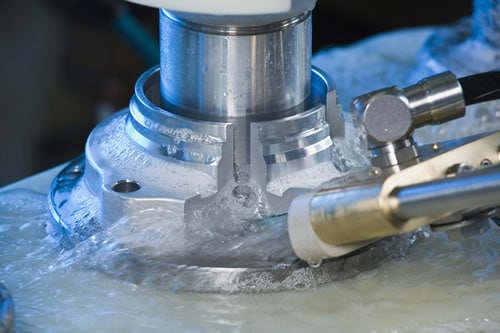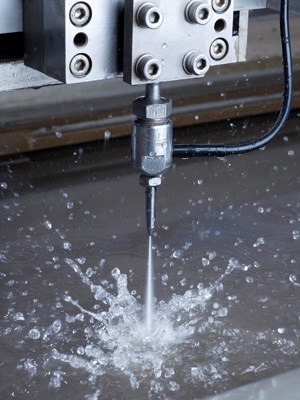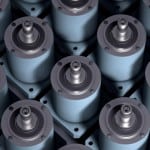Up until today, traditional precision machining processes were at the forefront of the industry. Nowadays, new machining processes have emerged with the purpose of overcoming precision errors, improving energy efficiency and limiting the generation of pollutants. In this article you will learn about the new trends in machining techniques.
Non-conventional machining methods
Laser beam machining (LBM)
An innovative process, and one of the most widespread non-conventional methods, is laser beam machining or laser micromachining. It is a thermal process that allows for chip removal. Material removal is achieved thanks to its fusion and vaporisation, with the process focusing on very specific areas at high temperatures.

Ultrasonic machining
It is known as a process that aids better-known methods such as drilling, turning and grinding. This technology first appeared as ultrasonic machining; a process that accomplishes the removal of excess part material through the tool’s vibration and the use of an abrasive liquid. The advantage of this technique is that it can be applied on materials both fragile and hard, always accomplishing the same results. By using this technique we prevent:
- Excess energy accumulation.
- Contact between the tool and the part.
As it evolved, new trends emerged from this technique, such as the Rotatory Ultrasonic Machining (RUM).
Electrochemical machining (ECM)
This is another uncommon method which is considered to be a complex process, since it removes material through an electrolytic effect. Its most outstanding feature is that the material starts at a high current and continues with a low voltage through an electrolyte.

Roller burnishing
It is an even less-known technology. Its main purpose is the plastic deformation of the material, removing residual tensions.
(WJM) technique
Lastly, we mention another process that is undoubtedly groundbreaking and novel: waterjet cutting. This system applies a high-pressure water jet on any material until the desired finish is achieved. Thus, the cut achieves a resolution that is up to 20 times higher than that of other conventional machines.

What are the features of this machining system?
- Performs perfect, precise cuts.
- Does not transfer heat.
- Does not generate contaminants.
As with any process, we can always find small disadvantages, such as the need for a large space, the depth of the cut or high production costs.
Now that all machining trends have been defined and explained, which of them are you most interested in?
In this case, we are talking about a subtractive technology process used for manufacturing large quantities of parts. However, there are other technologies for manufacturing mechanical components such as moulding or additive technologies, where 3D printing stands out. These technologies involve adding material layer over layer in a controlled fashion. Thanks to this, the manufacturing of prototypes or small quantities can be achieved with high precision. The choice of one or another technology will depend on the needs of each application.
Do you need more information? CLR’s engineering and communications team has prepared a comprehensive guide which goes over part manufacturing techniques. Download now our guide for free: “Keys to manufacturing mechanical parts: from machining to 3D printing” and you will be able to set new manufacturing processes in motion.











